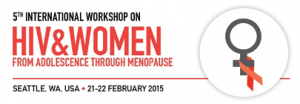Gender difference in virological response to ART
1 June 2015. Related: Conference reports, Antiretrovirals, Women's health, Intl Workshop on HIV and Women 5th 2015.
A study conducted in the UK found that although rates of virological failure are low in people starting first line ART, women and men who have sex with women (MSW) remain more likely to experience this than men who have sex with men (MSM). [1] There was no evidence that the gap is narrowing for those starting ART in more recent years.
A related US study suggested gender and ethnicity differences in ART disruption might explain some of the differences seen in treatment outcomes among HIV positive women and especially African American women. [2]. Both studies were presented at the 5th International Workshop on HIV & Women.
The first study was in ART-naive participants with a sexual risk for HIV transmission attending the Royal Free Hospital. Those included started ART between January 2001 and July 2013 and had documented viral load measurements at 12 to 18 months and 24 to 30 months from initiation.
The investigators assessed the proportion of participants with viral load non-response (>200 copies/mL) by gender/sexual orientation group and by year of ART initiation. Logistic regression adjusted for ethnicity, age and ART regimen was used to evaluate whether the association between gender/sexual orientation and virological failure changed over time.
A total of 1606 participants were included: 864 were MSM, 283 MSW and 458 were women. For MSM, MSW and women respectively: 1%, 52% and 66% were of black African ethnicity; 83%, 27% and 15% were white; and 16%, 22% and 22% were other. Median baseline age was 38, 41 and 36 years, CD4 was 268, 160 and 205 cells/mm3 and viral load was 5.0, 5.0 and 4.8 log copies/mL. First line ART regimens were similar with slightly more women starting with PI-based regimens (49%) compared to the other two subgroups (44%).
For MSM, MSW and women respectively: 7%, 14% and 21% had viral load >200 copies/mL at 12 months and 9%, 14% and 20% at 24 months, all comparisons p<0.0001.
Across all three subgroups, proportions of participants with virological failure after 12 and 24 months of ART were improved in later years, all comparisons p<0.001.
For MSM, MSW and women respectively, change in 12-month viral load non-response per calendar year by gender/sexual orientation (adjusted OR): 0.77 (95% CI: 0.07 to 0.84), 0.85 (0.75 to 0.96) and 0.86 (0.79 to 0.93), p=0.15. Change in 24-month viral load non-response per calendar year by gender/sexual orientation (adjusted OR): 0.73 (95% CI: 0.66 to 0.81), 0.82 (0.71 to 0.94) and 0.86 (0.78 to 0.95), p=0.072.
The investigators noted that women had more ART disruptions (switched or interrupted treatment) so non-adherence might contribute to the observed differences. They also suggested that poorer viral load outcomes in women and MSW might be related to: socio-economic status, time in the UK, family circumstances, psychological factors and comorbidities.
Their findings show that even in a high income setting with universal free access to healthcare, women are at higher risk of virological failure. Emphasis should be placed on improved/tailored support for HIV positive women.
The University of Alabama at Birmingham conducted the second study. This was designed to evaluate differences in ART discontinuation by gender and ethnicity. It was a retrospective medical chart review including ART naive, HIV positive patients, aged 18 and above, attending an urban outpatient clinic in Birmingham, AL between January 2004 and February 2009.
The evaluation included: socio-demographic and clinical factors, ART regimens with start and stop dates, and reasons for change.
Regimens were considered discontinued or changed if any antiretroviral within the regimen was discontinued or if any additional one was added.
The investigators used Cox proportional hazards regression to model time to individual regimen discontinuation and Poisson regression to model the numbers of days of treatment interruption (>14 days).
There were 422 HIV positive participants included in the analysis: 90 (21%) were women and 226 (54%) were African American (64 African American women, 162 African American men, 22 white women, 151 white men and 23 with ethnicity other/unknown).
Overall 243 (58%) participants discontinued or changed at least one antiretroviral during a median follow up of 2.8 years. With white men – who had the lowest discontinuation rate – as reference the hazard ratios for discontinuation for African American women, African American men and white women were respectively: 1.6 (95% CI: 1.2 to 2.2), p=0.004; 1.4 (1.1 to 1.8), p=0.011; and white women 1.2 (0.70 to 2.0), p=0.538.
The most frequent reasons for discontinuing ART for African American women were: poor adherence (57.5%), other medical conditions (15.1%%), and GI toxicity (9.6%).
The overall treatment interruption rate was 13.9 days per year, with African Americans interrupting treatment for more days per year than white participants: 17.5 vs 9.4 days/year, p=0.05.
The investigators suggested that the differences in rates of discontinuation might account for some of the less favourable ART outcomes observed in African American women.
References:
- Burch LS et al. Is the gender difference in virological response to ART declining over time? 5th International Workshop on HIV & Women, 21 – 22 February 2015, Seattle. Oral abstract 14.
http://regist2.virology-education.com/2015/5thHIVwomen/24_Burch.pdf (PDF) - Kempf MC et al. Gender and race differences in persistence of HIV treatment regimens. 5th International Workshop on HIV & Women, 21 – 22 February 2015, Seattle. Oral abstract 15.
http://regist2.virology-education.com/2015/5thHIVwomen/24_Burch.pdf (PDF)


